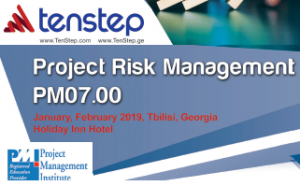It is natural that projects attract a lot of stress, as you have a fixed set of deliverables to produce in a fixed timeframe and with fixed resources – and all with your project sponsor breathing down your neck.
Positive stress can be generated in an environment which boosts productivity and focuses your team on the end goal. But negative stress can demoralize staff, reduce efficiency and de-focus your team. In this type of environment, you need to turn negative stress into positive stress.
Step1. Team Building
Positive stress can be generated when people within teams have positive relationships. These positive relationships can be facilitated by the project manager through team building techniques. This can include lunches, morning donut meetings, positive and fun status meetings, and doing things to help each other. There are many opportunities for team-building during the work day and even after work.
Step2. Rallying
The next step is now to rally your team around a cause – your project. Make sure everyone understands the objectives and outcomes of the project and reiterate them often. Make sure the team sees how their contribution is helping to achieve business value.
Step3. Boosting
Rallying works fine for teams, but may not be enough for individuals. You need to “boost” every team member by making them feel good about themselves and allowing them to gain confidence in completing the tasks assigned. You can do this by:
- Recognizing great performance when you see it
- Conducting informal staff reviews and providing positive feedback
- Introducing team awards and prizes
You usually don’t have the ability to give financial awards, but recognition and attention goes a long way to keeping people boosted.
Step4. Pin-Pointing
Often stressed teams have an “instigator”. This is a person (or people) who generate a lot of negativity and who influence the performance of others around them. Make sure the negativity of an instigator is identified and work with them to be a positive influence if possible.
Step 5: Self-Administering
As the project manager, you need to be in the right “frame-of-mind” yourself. If you are negatively stressed, then those around you are likely to be also. So to “practice what you preach” you need to feel up-beat and positive about the team. You need to feel fit and healthy, focused, yet inspirational. If you can achieve this frame of mind, then you can turn negative stress into positive stress and give your team a real chance at succeeding.
Are your projects less than successful? Contact us today to discuss implementing solid project management practices in your organization.

